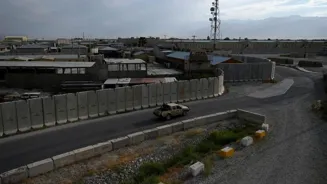The Silk Road
The Silk Road, one of history's most famous trade routes, established a crucial link between China and Europe. This pathway facilitated the exchange of valuable
commodities such as silk, spices, and precious stones. These items were transported, contributing significantly to cultural exchange and the prosperity of ancient cities along the way. This ancient network of routes stretched across vast distances, influencing commerce, cultural interaction, and the economic dynamics of diverse regions. Its importance lay not only in the transportation of goods but also in fostering mutual understanding and the exchange of knowledge between different civilizations, leaving a lasting legacy on the world.
Royal Road's Efficiency
Constructed by the Achaemenid Empire, the Royal Road was an impressive feat of engineering. This ancient route extended over 2,500 km, stretching from Susa to Sardis. The design allowed for swift communication throughout the empire, which was achieved through mounted couriers. This communication network was instrumental in facilitating trade and efficient governance across the expansive territory. The Royal Road's impact extended beyond trade; it enabled the efficient administration of the empire, thereby solidifying its power and influence across the ancient world. The use of mounted couriers ensured that messages and directives could travel rapidly, maintaining centralized control and promoting economic activities.
Tea Horse Road
The Tea Horse Road, an ancient pathway, linked Yunnan and Tibet, playing a pivotal role in cultural and economic exchanges between these regions. The primary commodity traded was tea, which was exchanged for horses. These goods were transported through mountainous terrains by mule caravans, which represented a remarkable feat of adaptation and perseverance. This difficult journey demanded significant resilience from travelers and the animals involved, making the exchange a symbol of endurance. The Tea Horse Road's impact was far-reaching, fostering interaction between the regions and promoting economic development. It connected diverse cultures and promoted the exchange of goods, ideas, and traditions, establishing a lasting imprint.
The Grand Trunk
The Grand Trunk Road, spanning over 2,500 km, established a critical connection between Bengal and Peshawar. This ancient road, constructed centuries ago, served multiple critical functions. It facilitated trade, supported military movement, and spurred cultural exchange across North India, thus playing a vital role in regional development. Today, it continues to be one of India's major highways, showcasing its enduring significance. The longevity and importance of the Grand Trunk Road highlight the crucial role that infrastructure plays in shaping history. The continued use of the road is a testament to its enduring importance and impact, illustrating how ancient infrastructure can shape modern society.
Amber Road
In Europe, the Amber Road served as a vital commercial route, facilitating the transport of amber from the Baltic Sea to the Mediterranean. This valuable commodity was the lifeblood of trade for centuries, fueling economic prosperity. Towns and fortifications were strategically positioned along the route, thriving due to the significant trade volume. This historic route vividly demonstrates the impact of specialized trade on regional development. It underscored the importance of specific commodities in regional commerce, thus shaping the economies of regions along its course. The Amber Road serves as an example of how commodities can drive the growth of civilizations.
Incense Route's Journey
The Incense Route, located in the Arabian Peninsula, holds a rich history as a network of paths for transporting frankincense and myrrh. These valuable goods were transported from southern Arabia to the Mediterranean, thus fostering trade connections across vast distances. Ancient caravanserais and desert oases along the route are still visible, highlighting its historical significance. This network was more than just a commercial pathway, it also facilitated cultural exchange. This facilitated economic activity while providing a deeper look at trade, social structures, and the environmental adaptations of ancient societies, offering lasting insight into ancient trade practices.















